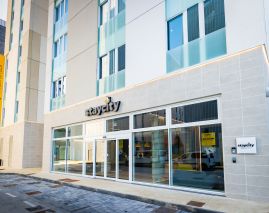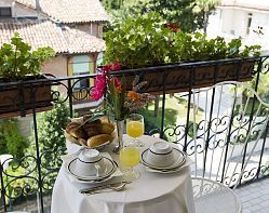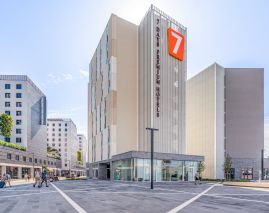There is Lots to Discover in Venice
Venice is situated in Northern Italy on the Adriatic Coast. The city is often a destination for tourists. The reason for this is definitely the unique layout of the city. It developed from 117 islands. Therefore, Venice is described as the lagoon city. Other nicknames of the city are „La Serenissima“, which if you translate the Italian it means the most serene and the city of rivers and bridges. More than half of the surface area of Venice lies on a body of water and approx. 400 bridges grace the cityscape. The historical city centre is a magnet for tourists but the industrial life of the city predominantly takes place on the mainland.
Journey to Venice
Approx. 11 km away for the city lies the airport „Aeroport de Venezia Marco Polo“ . From the airport, you can reach the city-centre with a shuttle service or you can get directly to the Adriatic coast. It is also easy and quick to reach by water. The water transport is located where there is a lot of water and it is a popular and touristy means of transportation.
It is important to bear in mind that Venice is a car-free city. If you arrive in your own car, you need to park it on the mainland.
Districts of Venice
Venice is comprised of 6 urban districts. The district of Mestre is located on the mainland and it has the nickname „ugly sister of Venice“. Many workers and immigrants live in this district and it has significantly more inhabitants than those who live on the islands. The “working life“ of the city unfolds on the mainland and thus there are small, plain houses here which represent a stark contrast to the magnificent buildings in the old town.
The old town is the city of canals. Here it is easiest to get around by foot or by bicycle. The 117 islands all have their own role and this was also the case in the past. Thus there is a special cemetery island, one for producing vegetables etc. numerous residential buildings in the old town stand empty. On the one hand, it may be due to the higher prices and on the other hand it may be linked to the bad condition of the buildings which are often uninhabitable as a result of the flood waters.
Tourist Attractions in Venice Tell You the Story
The history of the old town of Venice can be traced back as far as the year 540. The rise of the city began from around 1000 years after the birth of Christ and at which point many buildings were constructed. The most important square in Venice is the Piazzo San Marco. From here you can visit several buildings bordering the square. You can also sit in one of the cafes that are located by the square and let yourself be inspired by the backdrop.
The Doge ́s Palace is part of the history of Venice and it is located on the East side of the Piazzo San Marco. For a long time it was the seat of the heads of state in the Republic of Venice. The magnificent Gothic building symbolised the power of the Sea Republic both internally and externally. Today there are still several gilded objects to be found in the interior and paintings of prominent artists adorn the walls. The Doge ́s Palace can be visited from the inside every day.
There is also the Saint Mark ́s Basilica on the East side of the Piazzo San Marco. Its predecessor dates back to the 9th Century and this building was erected in the same spot after a fire broke out in the 11th Century. It is one of 124 churches in Venice and it is considered an important byzantine church on a world-wide scale. The layout alone will win you over, it is modelled on a cross, every arm and the middle is crowned with a dome. The interior area of the cathedral should also be on your list of things to see. There are several artworks from all over the world that are exhibited here to adorn the church. Alongside the mosaics on the walls, floors and ceilings which look like works of art in themselves, the high altar of the cathedral is also a highlight.
Cultural Journey Through Venice
Numerous artists have been guests in Venice. Venice is also a city of museums, galleries and art collections. It is always worth a visit to the Galleria dell' Accademia. The art collection that can be found here is not only the most well-known and most significant in Italy or Europe but on a world-wide scale. The foundation of the contemporary collection dates back to the year 1750. Other significant artistic treasures were added during the time of Napoleon and which found their way to Venice from the oppressed churches. Today, 24 rooms of the museum exhibit works from Venetian artists from different epochs of art.
The meaning of art in Venice is also clear in the Biennale di Venezia which is a guest here every 2 years. The international art exhibition in Venice is so important that it not only takes place in the galleries but also in public spaces. For those who cannot find a place in the city galleries, they can rent an exhibition space somewhere in order to take part in the Biennale.
Eating in Venice
The cuisine of Venice is characterised by its proximity to the sea. Several dishes are therefore comprise fish. A sign of good food in Venice is the fact it does not rely too heavily on pasta dishes which you can get anywhere in Italy.
You can eat typical Venetian food at Da Alberto. The restaurant is located somewhat away from the tourist streets in Cannaregio. It is simply and rustically furnished, the menu changes on a daily basis because it is only by doing this that the cook knows which fresh fish he can serve you. A lunchtime menu including wine and fresh fish can be purchased for around 25 euros per person. This is very cheap for the standards in the city.








































